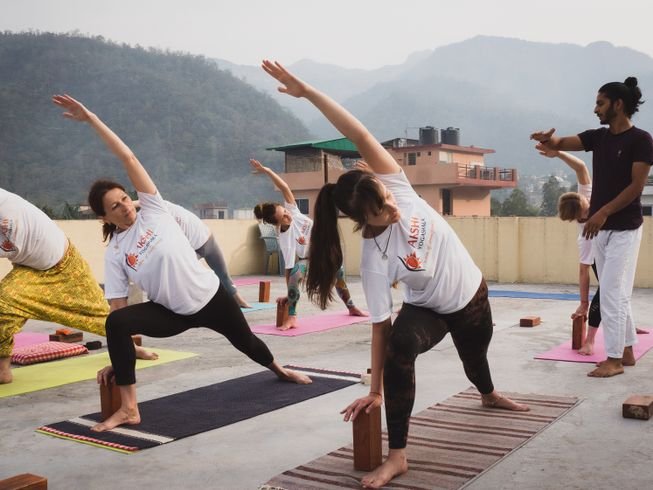
WHAT’S THE MEANING OF “ASHTANGA”?
The word Ashtanga itself means “the eight limbs (branches)” of yoga which according to the ancient knowledge. There are: Yama, Niyama, Asana, Pranayama, Pratyahara, Dharana, Dhyana and Samadhi. Pattabhi Jois and T. Krishnamacharya established Ashtanga Vinyasa Yoga in Mysore (South India) in the 20th century. These branches are meant to expand the whole discipline into other fields to:
learn different techniques to control your breathing and vital energy.
improve your concentration and knowledge
have a better control of your senses
learn different methods of inner and outer purification and of course to balance the mind within the physical body: yoga asana.
Ashtanga Vinyasa yoga is a dynamic, flowing style that connects the movement of the body with a specific technique of breath called “ujjai ”. The importance of this yoga asana practice relies on the daily practice of a sequence series of postures. According to the progress of the yoga practitioner, there are six series of Ashtanga yoga sequences where the level of the asanas as well as the level of concentration in the mind increase.
Check here: 200 hour yoga teacher training in Rishike
Mysore style of Ashtanga Vinyasa yoga classes means that the students have to memorize each asana sequence, develop it individually, but setting the energy together and get adjustments from the teacher supporting the class. They should master each posture in the sequence they are working before they move on to the next.
Ashtanga yoga is considered a vigorous, orderly practice. And, as such, is more suited to students who want a dynamic and rigorous yoga practice.
WHAT IS VINYASA YOGA FLOW?
The term Vinyasa refers to connects the breathing system with every movement in the series.
Vinyasa is also the term used to describe a specific sequence of poses commonly used throughout a vinyasa class. For example, Chaturanga to Upward-Facing Dog to Downward-Facing Dog.
In a Vinyasa practice, the student is led by the teacher who will create a different class every time to develop the certain number of asanas. And he go with dynamic flow and increase the level of the postures with the support of some elements such as props, music, some variations according to the student, etcetera.
SOME DIFFERENCE BETWEEN VINYASA FLOW AND ASHTANGA VINYASA YOGA STYLES ARE:
The sequencing: Ashtanga Vinyasa yoga consists of a series of postures: primary, secondary, and advanced. On the other side, Vinyasa Flow class sequences vary, the practitioner might change a sequence each time.
Each Ashtanga Vinyasa series includes a category of asanas: the primary series centers on forwarding bend, the second series focuses on backbends, and the advanced series emphasizes arm-support and arm-balancing poses. Vinyasa Flow yoga sequences, on the other hand, often feature a peak pose, chosen by the yoga teacher according to the level of the student class.
The main development of the Ashtanga vinyasa practice is up to the student with the Mysore style class mentioned above. While in the Vinyasa Flow class, the teacher always leads the class through the asanas.
Practitioners of Ashtanga Vinyasa Yoga do not use props, posture modifications, or music. In Vinyasa Flow classes, some teachers make props available to adapt and adjust to some asanas if it is needed.
